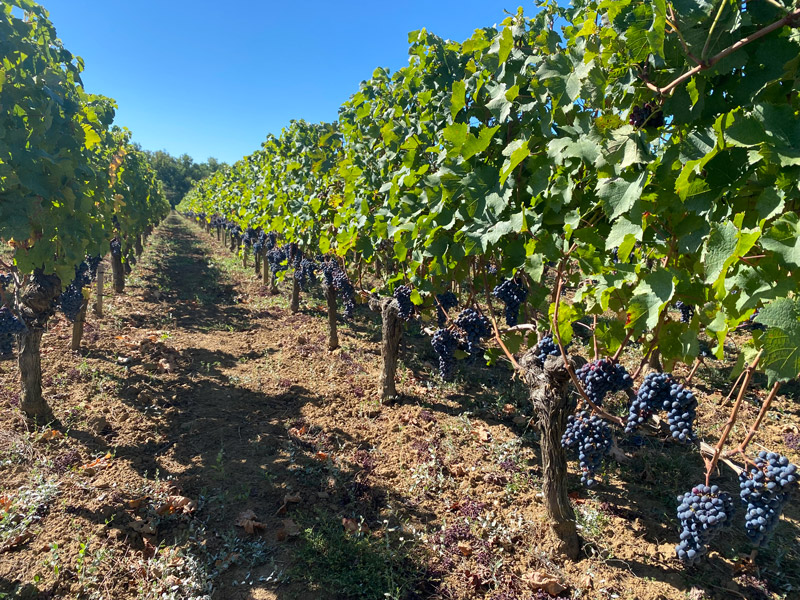Bordeaux 2022… and low yields
Posted by Gavin Quinney on 28th Apr 2023
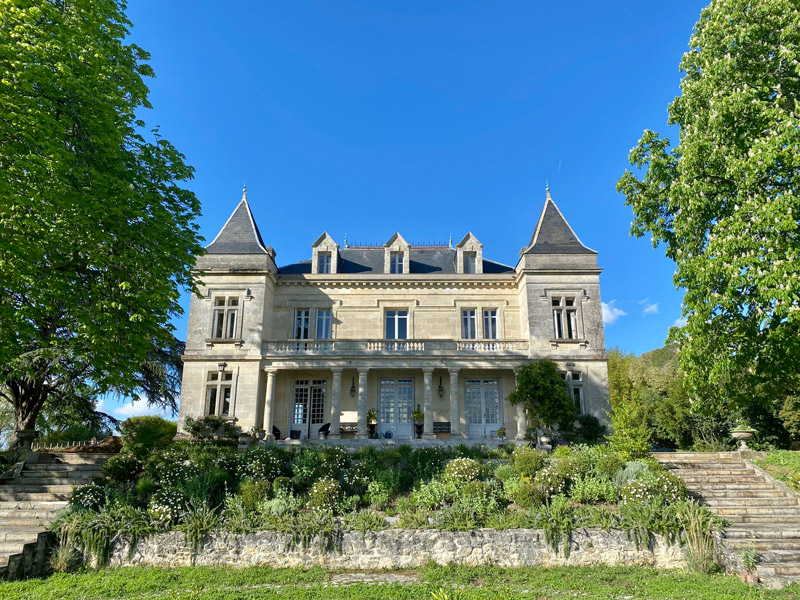
The last weeks of April are usually a tad chaotic for us these days, and none more so than this year. Among other things, it's the en primeur season for Bordeaux, when the world of fine wine descends on the region to taste the latest vintage. So while Angela has been busy handling orders at home I’ve been out with the madding crowd, traipsing from one château to the next to get a feel as to how 2022 shaped up across the board. More on all this anon.
Saturday 29th April is Diana Quinney's 90th birthday, so we're on the flight from Bordeaux to Bristol right now to celebrate with her in style at a lunch for family and friends on the big day on the Worcestershire-Gloucestershire border.
We’ll keep you up-to-date on our 2022s and any future offers.
All the best
Gavin & Angela Quinney
Bordeaux 2022 and low yields
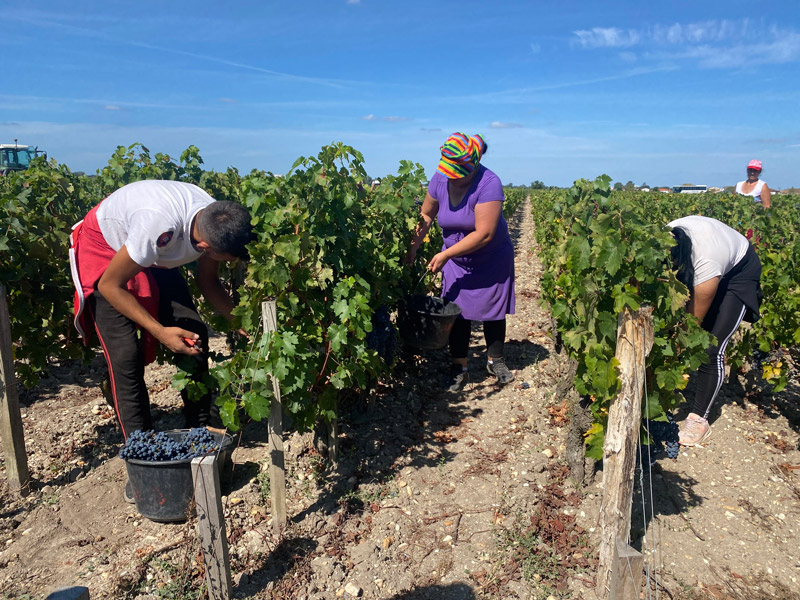
As a follow-up to my detailed weather and harvest report for Bordeaux 2022, I've crunched some of the numbers on the yields across different appellations. The data was released by customs and the CIVB - the Bordeaux wine bureau - at the end of March and, although it won't be of the slightest interest to most sane wine lovers, it's fairly clear what's going to happen to prices for many of the most sought-after wines en primeur.
When critics and the trade extol the virtues of their favourite wines in advance of prices being announced, but there isn't much to go round, we shouldn't be taken aback when release prices are set accordingly by producers.
Here's the overall picture for the amount of wine produced in Bordeaux in 2022 and how it compares to recent vintages:
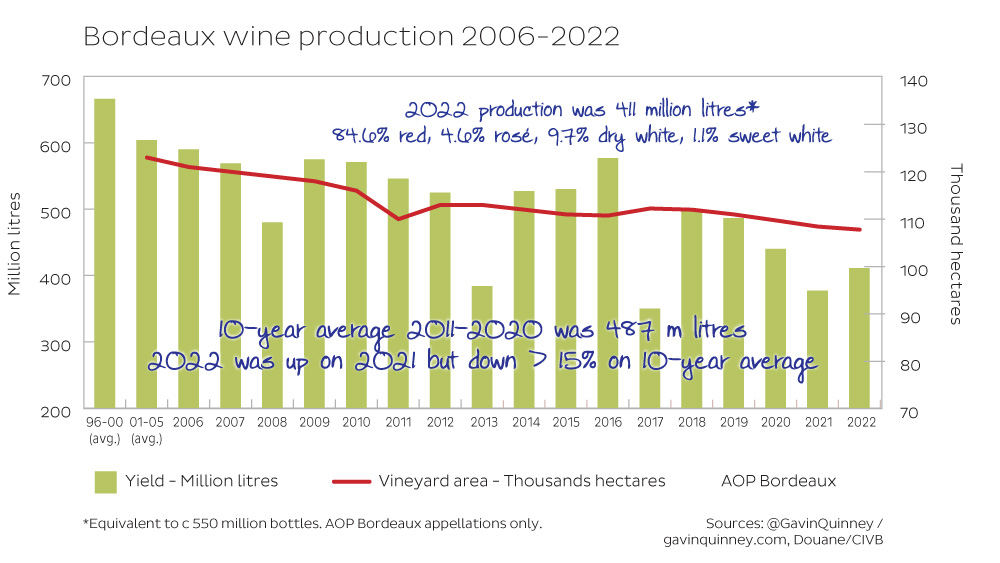
Bordeaux produced 411 million litres of wine in 2022, and although this was more than in 2013, 2017 and 2021, it was a relatively small crop.
At 411 million litres, 2022 was down 15% on the average annual production of 487 ml from 2011 to 2020, and 30% less than the average production of 580 ml from 2001 to 2010. The average from 1996 to 2000 was 666 ml (we came here in 1999).
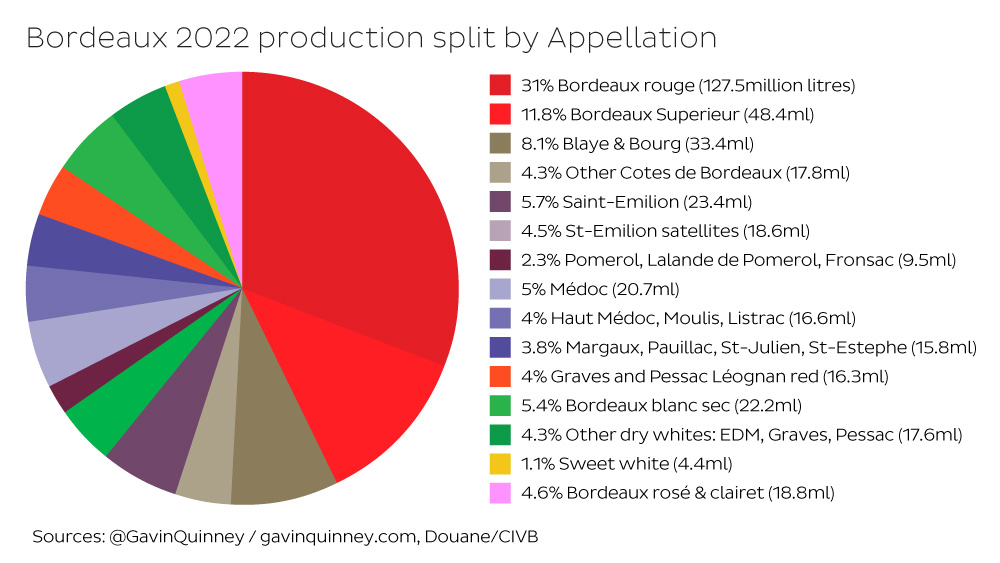
The vast volume of wine comes from the generic Bordeaux appellations. 43% of production is AOC Bordeaux and Bordeaux Supérieur red plus over 12% from the 'Côtes' appellations like Bourg, Blaye and others. Saint-Émilion and its satellites clock up over 10% - all red - while dry white makes up less than 10% and, even in a decent year, the sweet whites account for little over 1%.
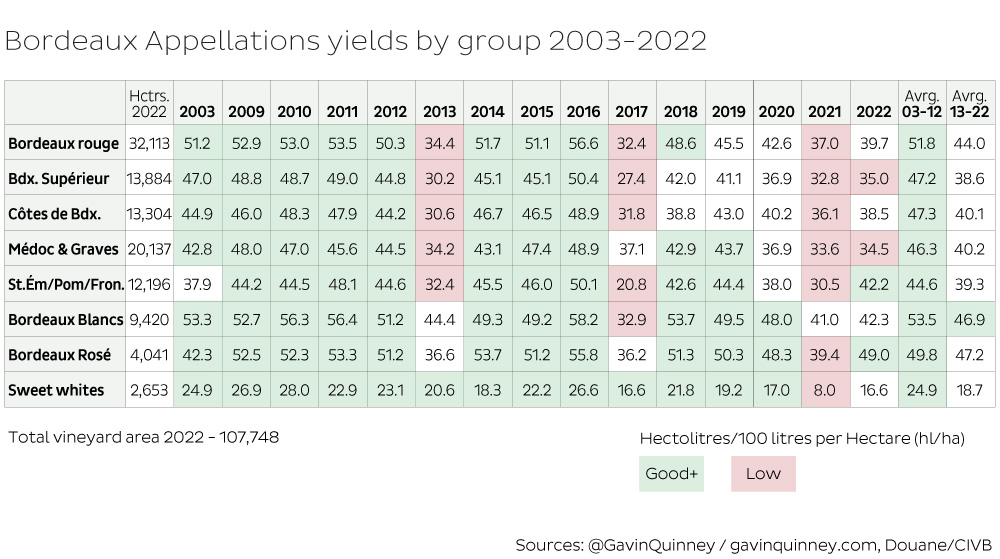
This table above shows the yield per hectare, expressed in hectolitres (100 litres) per hectare. Looking at all the appellations by grouping them together into logical areas, 2022 has been another year of lower yields. For the last two columns on the right, I've taken the average yield per year for the 10-year periods from 2003-2012 and 2013-2022. The low production years of 2013, 2017 and 2021, and to a lesser extent 2022, are highlighted in red. The better production years are shown in green.
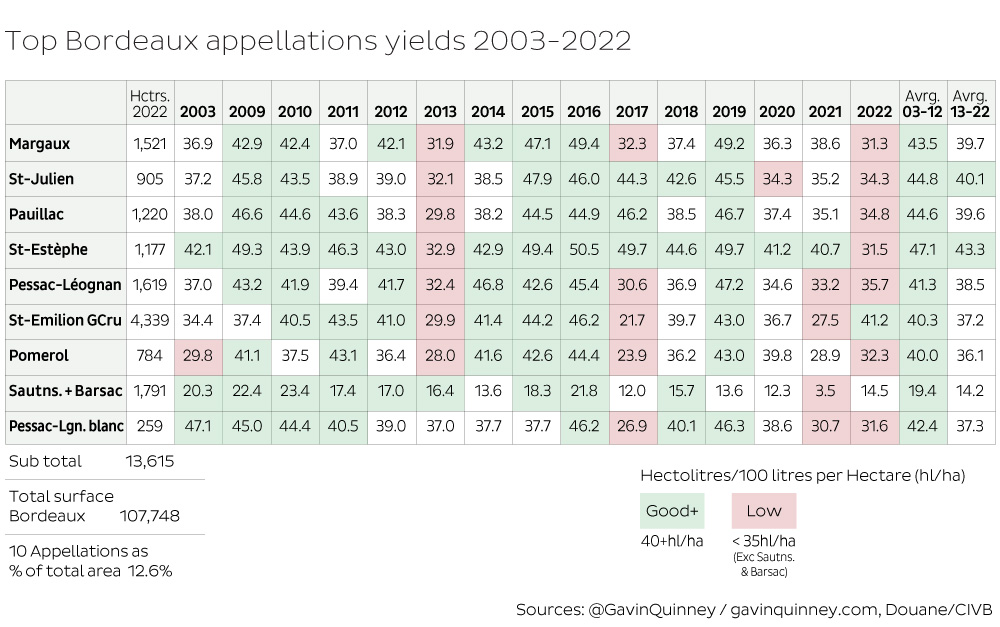
Now for the more prestigious appellations. The vast majority of the top estates that sell their wine as 'futures' - or en primeur, some time before bottling - come from these places. The last two are for white wines, the rest red. By no means all the wine from these appellations is sold en primeur, especially in a large area like Saint-Émilion Grand Cru, but it's an indication that the 'famous' wines represent just a fraction of the total region of Bordeaux.
It's clear from this table that many of the famous appellations had lower yields in 2022 - notably Margaux, St-Estèphe, St-Julien, Pauillac (the four celebrated areas of the Médoc) and Pomerol. Yields were more generous in Saint-Émilion, which was the opposite of, say, 2017. In short, smaller berries in 2022 due to the drought and the heat were behind this.
Many of the leading estates in these areas had lower yields.
And now for the geekiest map for wine nerds, and for all those with a vested interest.
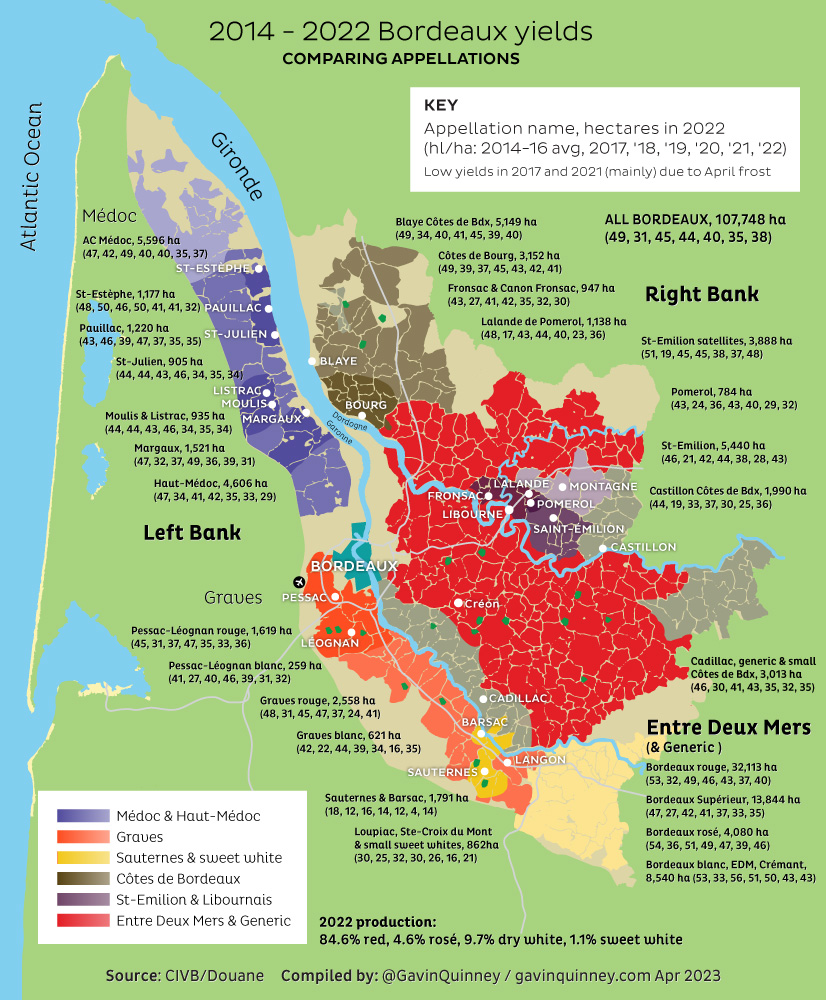
It’s a deep-dive into the yields produced in the different appellations across Bordeaux over recent years. For 2022 there were mixed fortunes, so while some parts of the ‘Right Bank’, like Saint-Émilion (pictured below), enjoyed more positive returns, others - namely on the ‘Left Bank’ to the north of Bordeaux - saw lower yields.
Contrast these with 2017, the year of the late April frost when large areas of the Right Bank lost much of the crop, while the premium Haut-Médoc appellations next to the Gironde estuary were unscathed.
More on the 2022 vintage shortly.
